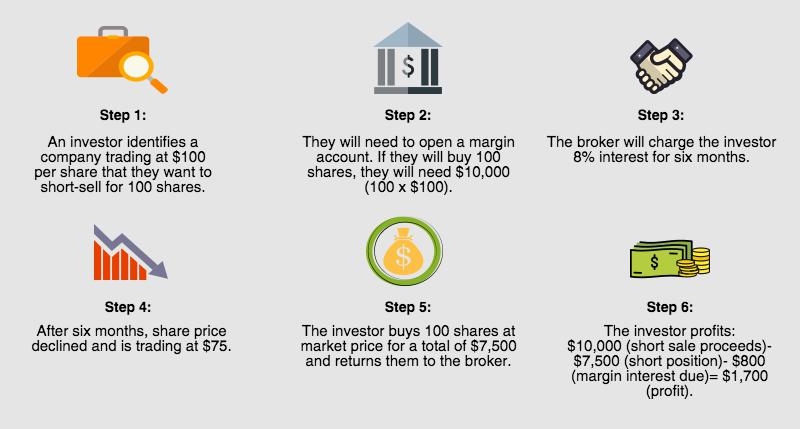In bear markets, investors can make money by selling short positions. How can they profit?
Traders invest in companies because they believe the stock will rise in price. This is called taking a "long" position in a stock.
The "short position" is a bet that the stock price of the company will fall. Because it involves borrowing money to buy stocks or another asset such as futures contracts or exchange-traded funds, shorting is high-risk.
Short positions are often taken by speculators for a profit. Some investors also use them to hedge against the downside risks of long positions in the same security. This is a quick overview of short selling and how it can benefit investors who trade in the stock exchange.
How to shorten a stock
It is easy to take a short position on a stock. First, open a margin account. A margin account allows short sellers to borrow as much as twice the cash balance from their broker.
After the account has been set up, investors can borrow shares from brokers. If the shares fall in price, the investor can then purchase the same number of shares on the open market and return them to their broker.
The lender or brokerage firm will be liable for any increase in the price of the shares. Investors must "close" their short position sooner or later by purchasing back the same amount of shares and returning them the broker.
Investors can usually hold a short position as long as they wish. However, a shorter term will result in higher costs as brokers charge interest for investors who borrow shares from them.
Step by step short selling
Investors will make a profit if the share prices of the companies they are shorting fall over time, as explained above. This is how it works.
-
Investors identify a company that trades at $100 per share and they wish to short-sell for a certain number of shares. In this instance, 100 shares.
-
They will need to open a margin bank with their brokerage firm for $10,000 (100x100).
-
For example, a broker might charge 8 percent interest over six months.
-
The company's share prices have fallen over six months and now trades at $75
-
An investor buys 100 shares at the market price and returns them to the broker.
-
Investor profits: $10,000 (short sales proceeds) - $7500 (short position), - $800 [margin interest due] = $1,700 (profit).

In theory, a short sale has a higher risk than other investment strategies, as it involves using borrowed money to trade a stock or another asset that could increase in price. However, if speculators are able to predict share price movement correctly, their reward for shorting a stock can be high.
Investopedia notes that because of its many risks, short selling should only be done by traders who are disciplined and familiar with the risks and the regulations involved. Nevertheless, it can be a potent strategy for speculation or hedging during bear markets.
Securities Disclosure: I, Melissa Pistilli, hold no direct investment interest in any company mentioned in this article.
 Make Money OnlineForexInvestingBitcoinVideosFinancePrivacy PolicyTerms And Conditions
Make Money OnlineForexInvestingBitcoinVideosFinancePrivacy PolicyTerms And Conditions
